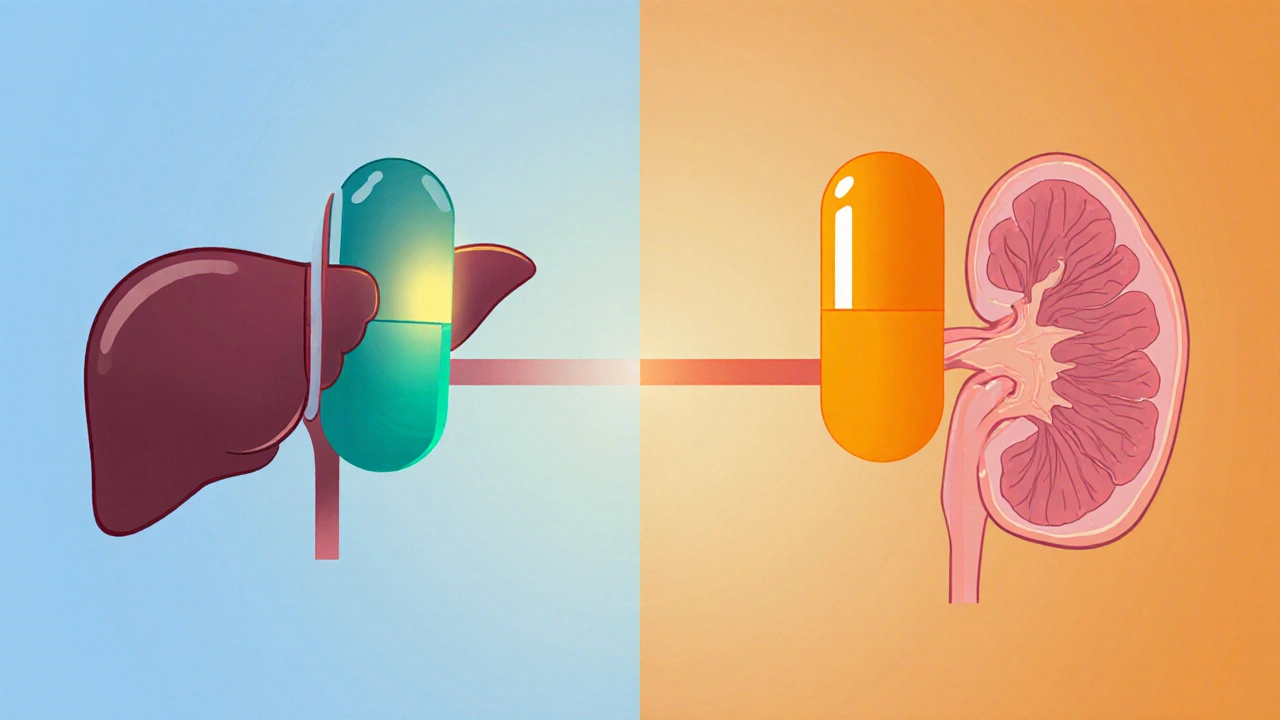Compare alfacalcidol and calcitriol, learn how each works, best uses, dosing, side‑effects and how to pick the right vitamin D analog for kidney or bone health.
Alfacalcidol: Your Guide to the Vitamin D Analog for Bone and Kidney Health
When working with Alfacalcidol, a synthetic form of vitamin D used to treat calcium‑related disorders. Also known as 1α‑hydroxyvitamin D3, it helps your body absorb calcium and phosphate, especially when kidneys can’t convert regular vitamin D efficiently.
The world of bone and mineral metabolism revolves around a few core players. Vitamin D the natural hormone that controls calcium balance and bone remodeling is the parent compound that alfacalcidol mimics. Calcium the mineral essential for strong bones, nerve function, and muscle contraction works hand‑in‑hand with vitamin D to keep your skeleton healthy. When kidney function drops, conditions like Renal osteodystrophy a bone disease caused by chronic kidney disease emerge, and alfacalcidol becomes a vital tool. Another common condition, osteoporosis the loss of bone density that raises fracture risk, also benefits from proper vitamin D activity. In short, alfacalcidol sits at the intersection of vitamin D, calcium, and bone health, offering a targeted way to boost mineral balance when your kidneys need a hand.
How does alfacalcidol actually work? It bypasses the kidney step that converts vitamin D into its active form, so it can directly bind to vitamin D receptors in intestinal cells. This binding regulates calcium absorption in the gut, raising blood calcium levels without overloading the system. For patients with chronic kidney disease, the result is smoother control of calcium and phosphate, which reduces the risk of vascular calcifications. Typical dosing ranges from 0.25 µg to 1 µg per day, but doctors tailor the amount based on blood tests and the severity of bone disease. Monitoring is essential—your provider will check serum calcium, phosphate, and parathyroid hormone (PTH) regularly to avoid overshoots that could lead to hypercalcemia.
Practical tips can make alfacalcidio therapy safer and more effective. Take the pill with a meal that contains some fat; vitamin D is fat‑soluble, and a little dietary fat improves absorption. If you’re also on calcium supplements, space them out by a few hours to prevent competition in the gut. Be aware of drug interactions: certain anticonvulsants, glucocorticoids, and cholestyramine can lower vitamin D levels, potentially diminishing alfacalcidol’s impact. Talk to your pharmacist about any over‑the‑counter vitamins you’re using. Side effects are rare but can include nausea, vomiting, or a metallic taste. If you notice muscle cramps, bone pain, or unexplained fatigue, let your doctor check your calcium numbers—they might need to adjust the dose.
What’s Inside the Collection Below
Below you’ll find articles that dive deeper into the topics we just touched on: detailed guides on dosing strategies, comparisons between alfacalcidol and other vitamin D analogs, real‑world patient stories, and the latest research on bone health in kidney disease. Whether you’re looking for practical advice on monitoring labs, safety tips for long‑term use, or a quick rundown of side‑effects, the posts ahead cover the full spectrum. Keep reading to get actionable insights that can help you or a loved one manage calcium balance, protect bone density, and stay on top of kidney‑related bone disorders.

